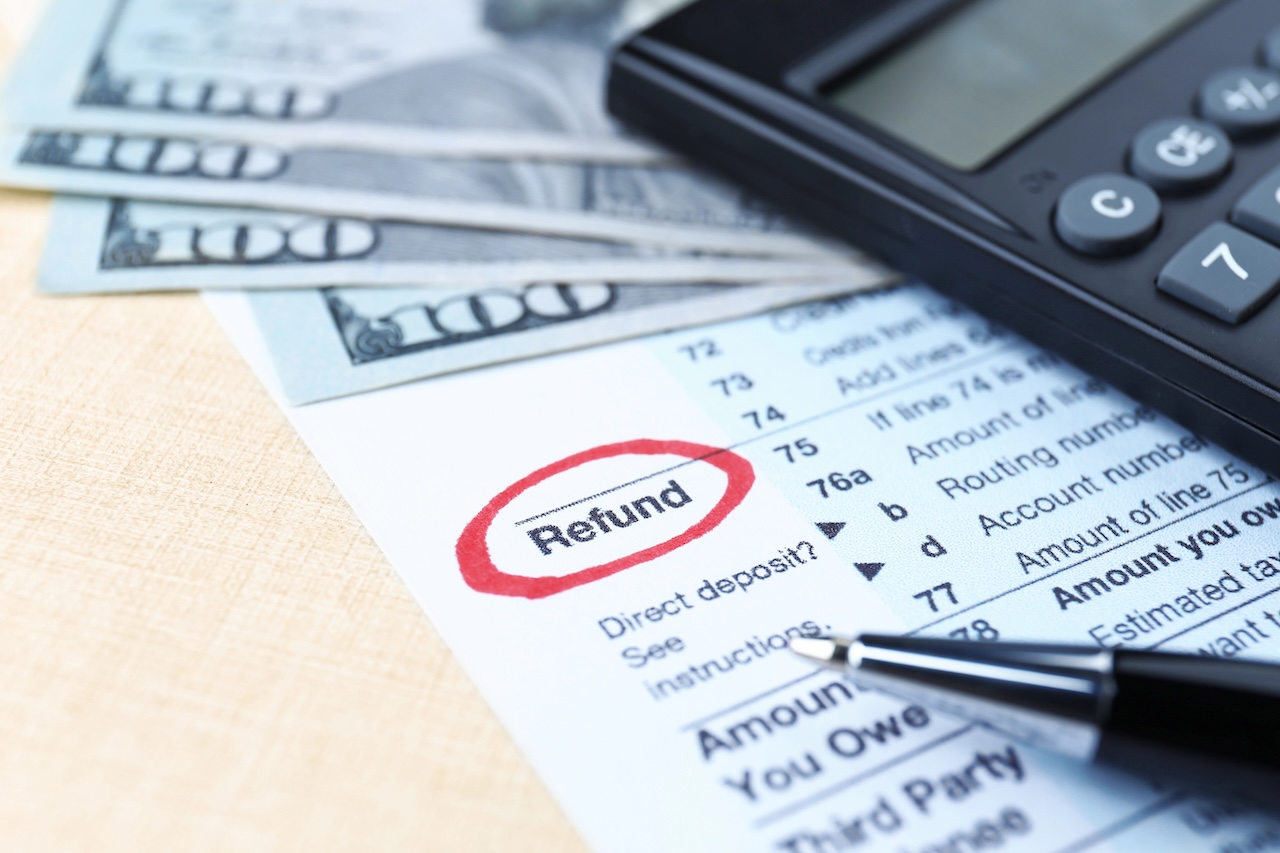17 Best Quicken Alternatives in 2024 (Free & Paid)


For many years, Quicken was one of the best personal finance budgeting and bill management software programs. But these days, more modern budgeting tools exist. They connect seamlessly with your bank accounts, credit cards, and investment apps using the latest technology.
I was once a big fan of Quicken, but let’s accept reality — it’s no longer the top budgeting app on the market — far from it. If you’re looking for a Quicken alternative, we tried several options, and here are our favorites.
Key Feature: Free financial dashboard and wealth planner
Empower is an excellent budgeting app for those who want to build wealth. It offers a free Personal Dashboard that allows you to track your net worth, your financial accounts, and your budget. You can also earn a high APY on your savings through Empower’s no-fee Personal Cash account and take advantage of Empower’s wealth management services if you have a portfolio balance of $100,000 or more. With Quicken, I often ran into synching and connection issues, but with Empower, which is web-based, account synching is seamless.
Empower lacks the budgeting capabilities of some other apps on this list, but it’s the way to go if your priority is tracking your investments and net worth.
Key Feature: Spreadsheet automation for full customization
If you’re a fan of using spreadsheets to budget, you’ll want to know more about Tiller Money. Tiller Money will automate your spreadsheets at a low cost of $79 per year after a free 30-day trial. With some tweaking, it’ll pull your data for you and put it into a Google Sheets or Microsoft Excel document. While Quicken offers plenty of features out of the box, I find Tiller to be more customizable.
You can start with one of Tiller’s free templates or build your own, but after the initial work, you’ll have a fully automated spreadsheet tailored to your needs. You can use this to track your net worth and set budgets. If there’s a drawback, it’s that it helps to be somewhat comfortable with the basics of spreadsheets (or desire to learn).
To learn more, read our full Tiller Money review.
Key Feature: Sophisticated asset tracking for higher net worth users
Vyzer is a financial dashboard and management system designed for high-net-worth individuals who manage a variety of investment accounts. One limitation of tools like Quicken is that it’s challenging to track assets that don’t fit neatly into one of its integrations (and even then, sometimes the integrations don’t work).
With Vyzer, you can track assets that are not held neatly in a brokerage or bank account. They offer a service where you can upload any form, and they will parse it and add it to your assets. Do you own rental properties? If so, do you find it difficult to track cash flow? With Vyzer, they will do it for you and send that data to your dashboard.
No one else offers this. This allows you to analyze your portfolio, manage your cash flow, and do all the necessary analysis because those assets are now being tracked.
They have a free tier, just added in mid-2023, where you can track three portfolios (linking up three banks/brokerages) and use their tools to see how they compare. This isn’t a timed trial; it’s three portfolios tracked forever with access to many of their tracking and performance tools.
Key Feature: Gorgeous financial planning and forecasting tool
ProjectionLab is one of the best-looking financial tools I’ve ever seen. It’s a financial planning tool that includes deterministic projections, historical backtesting, simulations, and more to help you plan for your future. What it lacks in the budgeting department, it makes up for in planning.
ProjectionLab has three tiers and a 7-day free trial – Basic (free), Premium ($9/month), and Pro ($45/month), when paid annually. Basic lets you play around with the tool but will not save your data unless you upgrade to Premium. Premium gives you access to every non-financial advisor feature of the tool (everything a regular person would need).
Where Quicken focuses on spending and saving to reach goals, ProjectionLab can tell you if that saving (and how you are invested) will help you achieve those goals. Note that Projection Lab is not a budgeting tool, so it will not be a good alternative if that’s important to you.
Our review of ProjectionLab goes into much greater detail, including a tour by the founder.
Key Feature: Best-in-class budgeting tool
Learn more about You Need a Budget
You Need a Budget is powerful budgeting software that can help you build a budget you can grow into. It does more than track your money; it helps you build a framework for growing your wealth.
Think of it like Quicken with a personality and a philosophy.
YNAB’s philosophy revolves around four rules:
Those four pillars form the foundation for a budgeting app that has helped many people transform their financial lives and improve their spending habits. If you want to transition to a financial tool that will help you do more than just record expenses, you should look at YNAB.
For more information, read our You Need a Budget review.
Learn more about You Need a Budget
Key Feature: Inexpensive, online, & light version of Quicken
Simplifi by Quicken is a lightweight budgeting app built by the same team as Quicken. The app has all the basic features you’d expect in a budgeting app—tracking spending, setting a budget, setting savings goals, and detailed reports of income and expenses so you can analyze your spending. It uses Plaid, so it syncs up with thousands of institutions.
It also includes light investment tracking with real-time quotes and even tracks cryptocurrencies. Simplifi costs $3.99 a month, but for a limited time, it’s just $2 a month, making it one of the more affordable paid apps available. Note that while Simplifi offers a “Bill Connect” feature that lets you view your bills, there’s no way to pay for them through the app.
For more information, read our full Simplifi review.
Key Feature: Beautifully designed budgeting app
Lunch Money is a beautifully designed budgeting app that does one thing very well – budget. You can sync your bank accounts or, if you prefer, upload CSVs with your transaction data. If you’re a programmer, you can also take advantage of their developer API. Once your data is in Lunch Money, you can split, group, tag, and categorize all your transactions exactly as you want. Afterward, you can set a budget, which will link up with your transactions and give you an idea of where you are.
Finally, a net worth calculator can help you understand your progress. Lunch Money is cheaper and easier to use than Quicken. That said, it lacks the bill pay features Quicken offers, though it can track recurring expenses and let you know when bills are due. Perhaps the biggest knock against Lunch Money is that they don’t have a mobile app for iOS or Android. Their website can be used on a tablet or mobile device, but it’s not ideal.
Lunch Money costs $10 per month or $100 per year and has a 14-day trial. Learn more in our full Lunch Money review.
Key Feature: Can import data from Quicken
CountAbout was designed as a Quicken alternative. Founded in mid-2012, it is one of the only personal finance apps that will import data from Quicken. If you want to transition away from Quicken but worry about losing all your data, you can feed it your Quicken file, and it’ll populate itself. That’ll make the transition far less painful!
Like Quicken, CountAbout isn’t free but only costs $9.99/year for the Basic subscription and $39.99/year for the Premium subscription. The Premium subscription includes automatic transaction downloads. A subscription model means you have complete data privacy and won’t get annoying ads like other companies.
CountAbout is web-based, with multi-factor account security, so you don’t have to download a program onto your computer, and there’s no need to deal with unwieldy syncing issues – all you need is a web browser. And with CountAbout’s iOS and Android apps, your financial information is always at your fingertips.
Key Feature: Budget planner, calendar, and projector
Pocketsmith is a freemium budgeting tool that uses calendars and “event-based budgeting.” Being calendar-based means that rather than viewing your transactions as merely a long list of transactions, the calendar helps you understand when those transactions are happening and if they are doing so regularly. This helps inform you about your spending and is one of the more visual ways when compared to others on this list.
PocketSmith has a free option that allows you to manually import transactions, 12 budgets, 2 accounts, and projections for six months out. Foundation, $9.95 per month, billed annually, will get you automatic transaction importing, unlimited budgets, 10 accounts, and 10 years of projections. For $16.66 monthly, Flourish gets you 18 connected banks, dashboards, and 30 years of projections. Fortune is $26.66 monthly and offers unlimited accounts and 60 years of projections.
For more details, check out our full Pocketsmith review.
Key Feature: Native Mac application
Built specifically for MacOS, Banktivity is a personal finance money manager that imports data from Quicken, so you don’t lose anything in the transition process. It’ll do everything you want in a personal finance app, including budgeting, tracking spending, scheduling and paying bills, monitoring your investments (including real estate), and pulling data from financial institutions.
It also has some powerful reporting options that, if you’re a report junkie, you will probably really enjoy building, tweaking, and rebuilding. All this is also possible across iOS devices with seamless mobile app synchronization.
It is not free, though there is a free 30-day trial period. It has an annual subscription based on the level of service you want. Bronze starts at $49.99 a year and goes up to $99.99 per year for Gold.
Key Feature: Not cloud-based
MoneyDance is not as well known as some other apps on our list but is worth mentioning as it’s one of the few money apps that doesn’t rely on the cloud. If you are concerned about storing your data online, this solution keeps your data local to your computer.
You can still link your accounts online, which pulls your transactions automatically, but they only store them on your computer. You can enter transactions manually if you don’t want to link your accounts.
MoneyDance looks and feels like a checkbook, with the check register for transactions, but has charts and tables for reporting. It does budgeting but can also track your investments, albeit it’s not as feature-rich as others.
Moneydance is free to download and try, but it costs $65 (you can opt for a $90 annual subscription if you want updates). The free version has all the same features as the paid version, but you can only enter 100 manual transactions.
Key Feature: Follows Dave Ramsey’s Baby Steps
Have you heard of Dave Ramsey? Many folks swear by his approach to managing finances, and EveryDollar is built with that in mind. It considers human psychology rather than relying solely on math, which might explain why it is so effective.
Much like YNAB, EveryDollar uses the principles of zero-based budgeting.
In zero-based budgeting, you assign every dollar to a category (or job, in YNAB parlance). It’s a level of rigor that can be refreshing or restricting, depending on your personality. The app is beautiful, available on your smartphone, and has a free and paid version. The paid version costs $79.99 a year.
Note: The paid version offers phone support and automated transaction importing, which is a big time-saver; otherwise, you must manually enter the data.
Key Feature: Follows the envelope budgeting method
GoodBudget is a free budgeting app based on the envelope budgeting method. In envelope budgeting, you set aside a prescribed amount for each spending category and spend it each month.
It’s one of the most popular money management techniques in personal finance. The envelope refers to the original method of managing this type of budget, where you put physical cash into an envelope. When you run out of money, you borrow cash from another envelope or make do.
GoodBudget adds technology to the mix and synchs up bank accounts to help track your income and spending. You set the amount for each category and watch as your spending nears the monthly limit. It’s available for both iOS and Android phones.
Key Feature: Open-source and free
GnuCash is free open-source accounting software that, if you’re willing to put in the work, can replicate a lot of the Quicken experience for those willing to scale the learning curve. It features double-entry accounting (every transaction must debit one account and credit another), which is effective but will require an adjustment if you’re not used to it.
It offers many of Quicken’s functionality, such as splitting and categorizing transactions, managing multiple accounts, scheduling transactions, and reporting that includes charts and reports (balance sheet, P&L, portfolio valuation, etc.).
Its big advantage is that it can handle budgeting and investments, so it’s not strictly a budgeting tool.
Lastly, it offers QIF importing to import your Quicken files, plus OFX (Open Financial Exchange) protocol. This means you can pull in your data if your bank offers the ability to export transactions.
Key Feature: Date & calendar-based budgeting
Dollarbird is another personal finance app with an eye toward collaboration and a monthly calendar. The app builds a schedule of future income and expenditures to help you plan. Dollarbird also offers a five-year financial plan to establish longer-term financial goals and track your performance against them.
Dollarbird uses calendar-based money management. You can collaborate with others (a partner, family member, or a team) to manage a team budget, though the collaborative piece requires the Pro version ($39.99 / year).
Key Feature: Freemium app with cryptocurrency support
MoneyWiz has been around since 2010. It supports almost every operating system you can imagine—everything from Windows to Android to iOS devices like the iPhone and iPad—and it syncs them in real-time.
It’s a powerful budgeting tool that integrates with 16,000+ banks in 51+ countries, including cryptocurrencies. If importing from your financial institution concerns you, you can manually enter data, and it works just as well. For budgeting, you can work with their categories (which are multi-level) or add your own (and subcategories). You can split transactions, bulk edit, tag, and create powerful reports. It won’t pay your bills for you but does have notification features.
The freemium product has a free version with all the functionality minus synching across multiple devices and automated transaction downloads. For that, you must buy the Standard plan ($29.99 per year) or Premium ($49.99 per year or $4.99 per month).
Key Feature: Freemium budgeting-focused app
PocketGuard is a straightforward budgeting app that links your credit cards, checking and savings accounts, investments, and loans. It has a complete picture of your finances, but its strengths are in budgeting—how it updates and categorizes your spending as it happens and looks for opportunities to save. Using your spending, it also builds a personalized budget based on your data and the goals you set for yourself.
They have a free version and a Plus version. The free version has everything you need to track your expenses and keep an eye on them. Plus lets you to add custom categories and track cash transactions like income and bills. Pricing is $155.99/year if you pay monthly or $74.99 billed annually (50% savings)
Your choice of budgeting app will depend on your budgeting style and the features that are most important to you. For example, if you prefer to follow a zero-based approach to budgeting, you’ll likely be drawn to an app such as YNAB or EveryDollar. If you love spreadsheets, Tiller Money might appeal to you. That said, most top budgeting apps share a few key features.
Automatic syncing enables your banking balances and activity to be uploaded automatically into your budgeting app. This makes the entire process easier and saves you from having to manually upload your account data. Net worth tracking goes beyond basic budgeting, but it’s an important financial measurement. As such, it’s nice if you can get the feature in the same app you use to track spending and manage your budget.
Another “nice-to-have” feature in a budgeting app is a free version. While many won’t mind spending money on the premium version to unlock all of the features, if you just want a simple budget, most free versions have enough capability to get the job done.
We consider Empower Personal Dashboard to be the best free Quicken alternative because it offers budgeting and wealth management tools. While many other tools offer one or the other, Personal Capital offers both, so you can get it all in one place. They also offer a wealth management advisory service to help you with your investments.
Intuit created Quicken Online to compete with Mint. Near the end of 2009, they gave up and acquired Mint. Afterward, they opted to shut down Quicken Online and sold the entire Quicken unit to H.I.G. Capital in 2016. Quicken Online no longer exists but you can try Simplifi by Quicken as an alternative.
Any cloud-based alternative will work on a PC and a Mac. It’s cloud-based, so it works in your browser, which makes its operating system agnostic.
If you want personal finance software designed specifically for Macs, Banktivity is your best option. It’s one of the few personal finance applications built specifically for MacOS and has the richest feature set. Most importantly, it seamlessly integrates with iPhones and iPads.
It’s extremely unlikely that Quicken will be discontinued. They have retired older versions of the software and give users a path towards upgrading to their subscription product (which carries no year in its name), but private equity firms now own it, and they’re unlikely to shut down Quicken given how much they’ve invested in buying it.
If you’re no longer thrilled with using Quicken to manage your finances, including your budget, there are many alternatives, both free and paid, to choose from. For zero-based budgets, we like YNAB and EveryDollar, both of which offer slick and intuitive apps, and robust budgeting features. Ultimately, you can narrow your choice by making a list of “must-have” features. From there, compare pricing and any other helpful features that might help you make a final choice.

Tax refunds in early 2026 could be $1,000 to $2,000 larger for many households due to retroactive tax law changes....

Why does it feel like large companies always get the upper hand? Maybe it’s the long contracts with fine print,...

What can you do if you can’t afford college? Maybe the financial aid award wasn’t enough, or you only want...